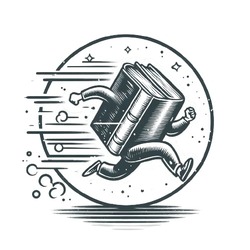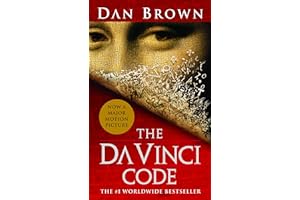One Sentence Summary:
The Da Vinci Code by Dan Brown is a thrilling and thought-provoking mystery that delves into the controversial history of Christianity, exploring the possibility of a hidden bloodline of Jesus and the power struggles that surround it.
Book Genre:
Mystery/Thriller
Main Topic of the Book:
Religion, history, and conspiracy theories surrounding the true identity of Jesus and the quest for the Holy Grail.
Key Ideas:
- Religion and belief systems are highly controversial and can be manipulated for personal gain.
- The search for truth and the line between fact and fiction.
- The role of symbols and codes in shaping the world around us.
- The power of secrets and the lengths people will go to protect them.
Main Parts of the Book and a Short Summary:
Prologue:
The murder of the curator of the Louvre Museum in Paris sets off a chain of events that leads to a thrilling and complex mystery involving secret societies, ancient relics, and a hidden code.
Part 1 – The Facts:
Robert Langdon, a Harvard symbologist, is called to the scene of the crime and becomes a suspect in the murder. With the help of Sophie Neveu, a police cryptographer, they discover a code left by the curator, which leads them on a journey to uncover the truth about the Holy Grail and its connection to the bloodline of Jesus.
Part 2 – The Myths:
As Robert and Sophie decipher the code and follow a trail of clues, they encounter secret societies and powerful organizations that will stop at nothing to protect their interests. Along the way, they uncover shocking revelations about the secrets of the Catholic Church and the true identity of historical figures.
Part 3 – The Cryptex:
The final leg of their journey takes Robert and Sophie to London, where they must solve a complex puzzle to retrieve the Holy Grail before it falls into the wrong hands. The truth they uncover is both shocking and controversial.
Key Takeaways:
- Religion and history are intertwined, and the truth may not always be what it seems.
- Codes and symbols are powerful tools that can be used for good or evil.
- The quest for knowledge and the thirst for power can lead people down dark paths.
- Secrets have the power to shape entire civilizations and can be protected at all costs.
Author’s Background and Qualifications:
Dan Brown is an American author who has written multiple best-selling thrillers. He has a background in art history, which is evident in his writing style and attention to detail in historical and artistic references. Brown’s extensive research and use of actual historical facts and theories add an additional layer of depth to his novels.
Target Audience:
The target audience for The Da Vinci Code is broad, as it appeals to readers who enjoy mysteries, thrillers, historical fiction, and religious fiction. The novel also appeals to readers interested in conspiracy theories and those who are open-minded about controversial religious topics.
Publisher and First Publication Date:
The Da Vinci Code was published by Doubleday in March 2003 in the United States. It has since been widely translated and distributed in countries around the world.

